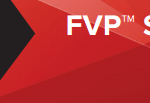Updated: As of today (12th of March 2015) vSphere 6 is downloadable! Login to the VMware portal in order to download the following newly released products:
- vSphere 6
- vSOM 6
- vCloud Suite 6
- SRM 6
- VSAN 6
- VMware Integrated OpenStack 1.0
Hear, hear!!! VMware vSphere 6 is here! 🙂
After a period of extensive testing, including a ‘public’ beta test, VMware vSphere 6 is launched today (February the 2nd)!!!
It’s been a while since the last major version release as listed in the table below. vSphere 6 should provide the next step of innovation in server virtualization.
| Version | Release date |
| vSphere 6 | 12 march 2015 |
| vSphere 5.5 | 22 sep 2013 |
| vSphere 5.1 | 10 sep 2012 |
| vSphere 5.0 | 24 aug 2011 |
| vSphere 4.1 | 13 jul 2010 |
New features
Check all the new features listed (as found on the VMware website) below:
Install and Upgrade
• Enhanced Install and Upgrade Capabilities – Windows vCenter installation experience has been enhanced with additional capabilities including custom ports, custom paths, uninstall and error messaging improvements. Furthermore, all upgrade paths from Windows vCenter 5.0 and up are now supported. vCenter Server Appliance (vCSA) now has a guided installer. Separate ISOs and scripted installation for both vCenter Server for Windows and vCSA reduce the overall download time and improve automation capabilities respectively.
Compute
• Expanded Support for New Hardware, Architectures, and Guest Operating Systems – Expanded support for the latest x86 chip sets, devices and drivers. Added support for FreeBSD 10.0 and Asianux 4 SP3 guest operating systems. For a complete list of guest operating systems supported, see the VMware Compatibility Guide.
• Increased Scalability – Increased configuration maximums: Cluster maximums have increased to support up to 64 nodes and 6,000 VMs. Virtual Machines will support up to 128 vCPUs and 4TB vRAM and Hosts will support up to 480 physical CPUs (Dependent on hardware at launch time), 12 TB RAM, 64 TB data stores, 1000 VMs and 32 Serial Ports. Increased support for virtual graphics including Nvidia vGPU.
Storage
• Storage IO Controls – New support for per Virtual Machine storage reservations to guarantee minimum service levels.
• Virtual Volumes (VVol) – Existing SAN/NAS systems become VM-aware making the VMDK file a first class citizen in the storage world. New APIs for data operations at the VMDK granularity.
• Increased Storage and Availability Integration – Integrations with new content library, storage products and features including Virtual Storage Area Network (Virtual SAN), Virtual Volumes (VVol), vFlash, vSphere Replication and SRM for improved storage and availability usability.
• NFSv4.1 with Kerberos – Support for industry standard NFSv4.1 in the storage stack. ESX will support the NFSv4.1 client, which connects to an NFSv4.1 server. Also supports Kerberos that is a security feature of NFSv4.1
Availability
• vMotion Enhancements
- vMotion across vCenter Servers – Allows VMs to move across boundaries of vCenter Server, Datacenter Objects and Folder Objects.
- vMotion across virtual switches – Allows VMs to move between virtual switches.
- Long Distance vMotion – Enable vMotion to operate across distance of greater than 100ms RTTs.
• vSphere Fault Tolerance for Multi-Processor VMs (SMP-FT) – Fault Tolerance now brings continuous availability protection for VMs with up to 4 vCPUs.
• vCloud Air Integration – New abilities to failover and/or failback to and/or from vCloud Air.
• vSphere Replication – Improved Scale and Performance for vSphere Replication. Improved Recover Point Objectives (RPOs) to 5 minutes. Support for 2000 VM replication per vCenter.
• Application High Availability (App HA) – Expanded support for more business critical applications.
Network
• Network IO Control – New support for per Virtual Machine and Distributed vSwitch bandwidth reservations to guarantee minimum service levels.
Management
• vSphere Web Client Enhancements – Performance improvements to areas including login, home page loading, action menus, related objects and summary views. Streamlined component layout and optimized usability experience by flattening menus and navigation.
• Multi-Site Content Library – Provides simple and effective management for VM templates, vApps, ISO images and scripts for vSphere Admins – collectively called “content” – that can be synchronized across sites and vCenter Servers.
• Virtual Datacenters – Provides resource aggregation and policy-based placement intelligence, while servicing as a primary point of integration across the vCloud Suite.
• Policy Based Management – Enables administrators to become more operationally efficient and automated in both the initial placement and ongoing maintenance of virtual machines.
• vSphere Host Client – C#-based host client available in this milestone that can manage hosts running hardware versions 8 to 11. Flex-based host client will no longer be available.
• VMware Certificate Lifecycle Management – A new command line interface (CLI) for managing both VMware and third-party certificates.




Pingback: vSphere 6.0 Link-O-Rama » Welcome to vSphere-land!
Pingback: vSphere 6 Links Courtesy vSphere-Land. | Big Virtual Me
Pingback: vSphere 6.0 Kaynak Linkleri – MrFerik